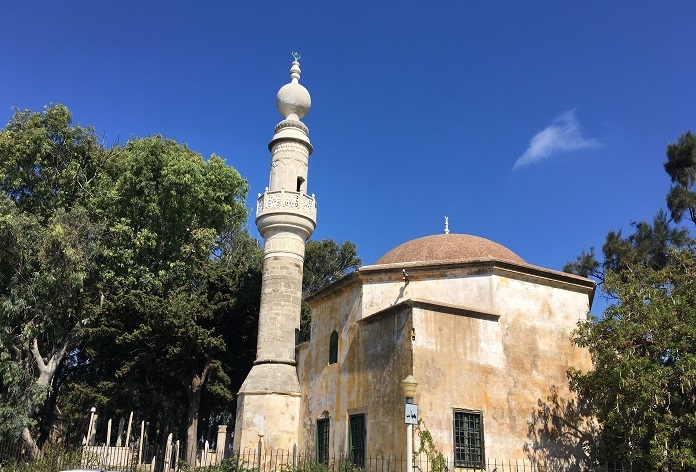
Confined by the pandemic? Join us for our ongoing virtual vacation as Thor and I visit a couple more sites on Rhodes and then hop on the ferry for Kos.
NOTE: Of course, Thor and I had to make another trip to Greece, as he’s fallen as much in love with the islands as I am. This time I wanted to return to Crete after 37 years, to introduce Thor to “glorious Kriti” and research more settings for my novel-in-progress, THE ARIADNE DISCONNECT. After time-traveling via ruins and museums to explore the mysterious, vanished Minoan culture, we went ferry-hopping to relax on a couple of our favorite islands.
Rhodes has become one of our favorite destinations, combining a wealth of historic sites from different eras, dramatic scenery, and of course fabulous pebble beaches where we can soak up the sun and that magical purple-blue sea. Before hopping a ferry for our next island, we managed to squeeze in a few more sites and memories to hold us through the winter and the pandemic time of no travel.
First, a return to Tassos Beach on the northeast coast. Tucked into a rocky cove are a taverna and loungers to rent. It’s a sociable place, but not oppressively crowded, and the shallow, clear water is lovely for snorkeling, with sunlight playing over the colorful marble pebbles.
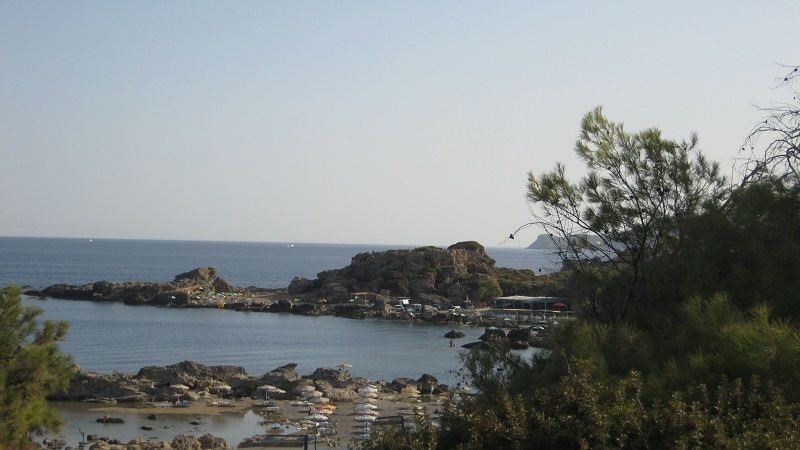
Here we had met gregarious Tassos the Cat on our first trip to Rhodes. He greeted all arrivals and would choose the most receptive lounger for cuddles.
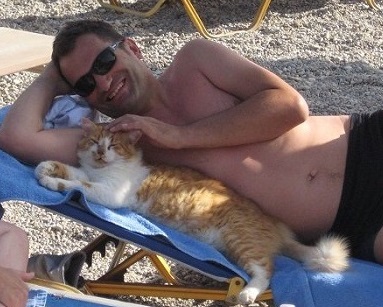
Then it was time to bid farewell (until next time, we hope) to Emma, the village donkey at Stegna.
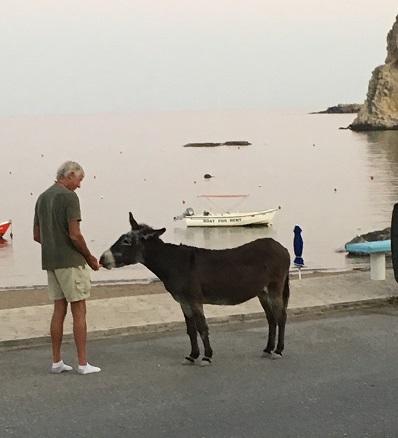
We drove to Rhodes Town, where we would pick up our ferry tickets, passing along the Medieval walls and past our very first Rhodes beach. On our first trip, our landlady had told us this beach was where she swam as a child, so we enjoyed a lovely dip and marveled at the clear water right beside the harbor.
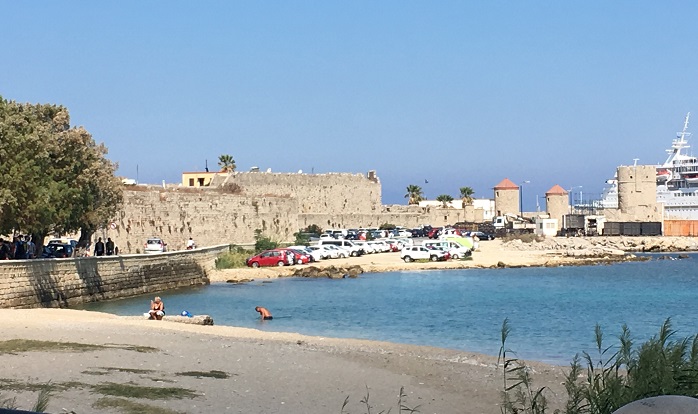
But this day we had just enough time to check out the ancient acropolis above town, where a restoration of the 2nd-century BC Temple of Pythian Apollo is underway:
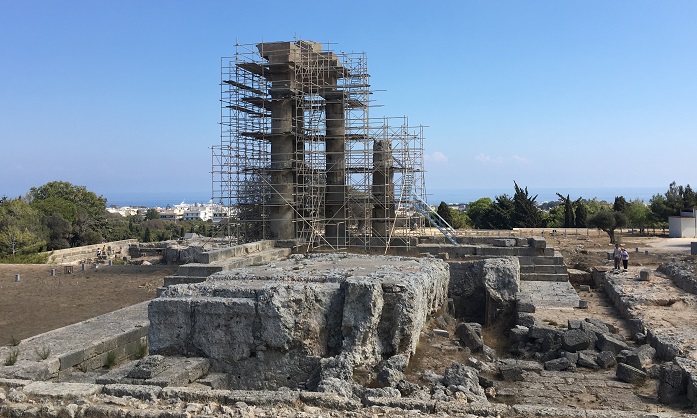
During the early-1900s Italian occupation, they restored the unusual, angled theater of the same period:
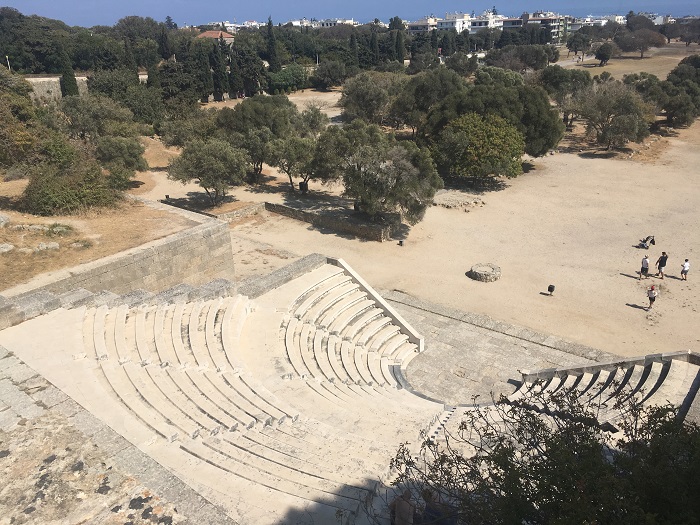
Lawrence Durrell, who worked on the post-World War Two recovery on Rhodes, took a dim view of the different restorations undertaken by the Italians, including the gaudy Palace of the Grand Master. Here, in his excellent memoir “Reflections on a Marine Venus,” Durrell describes an outing to the Classic-era ruins:
“Today, after lunch we walked, the four of us, up the gentle slopes of Monte Smith, past the little light-house…. Beneath us the blue carpet of sea stretched away to Anatolia where, say the peasants, you may still see the claw-marks of marauding dragons graven in the mountains; stretched sinuously along the capes and faults of Marmarice to where, in the northern corners, the first faint silhouette of islands rose; like stepping stones, pointing to Kos. Beneath us on the landward side stood the old stadium and the temple, now much-restored by the misguided Italians.”
Despite Durrell’s pronouncement, we enjoyed the open vistas and nearly-deserted site. The stadium had fancy marble seats in the front row for important viewers of the games; everyone else got backless benches.
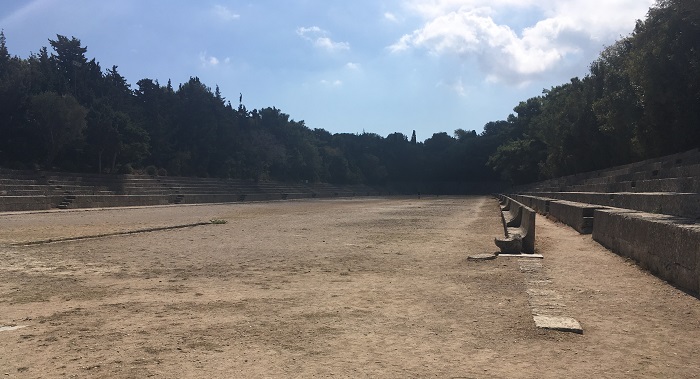
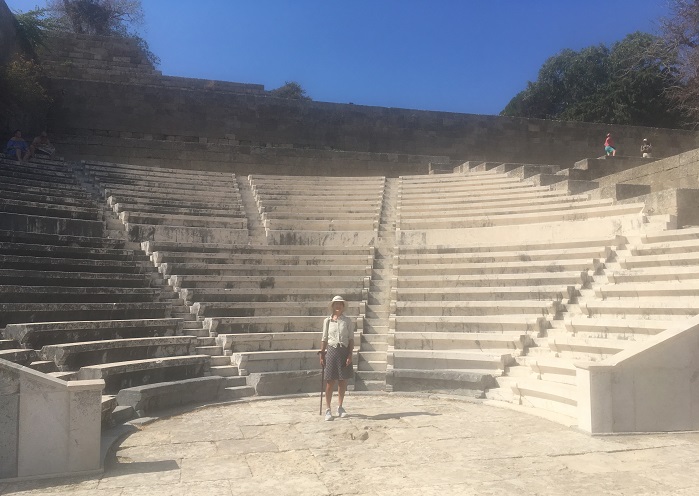
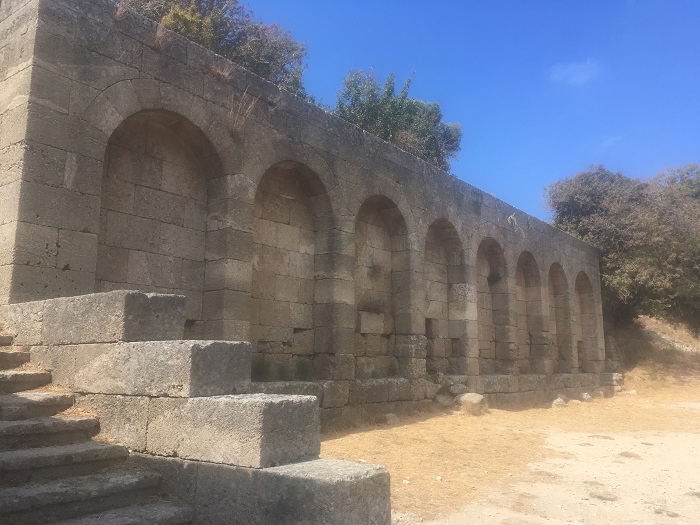
Then it was back to Rhodes Old Town to pass quickly through the Medieval gates for a glimpse of this fascinating walled city, one of the best-preserved in Europe. (For a full tour and history, see my series of blog posts here from our stay in 2017.)

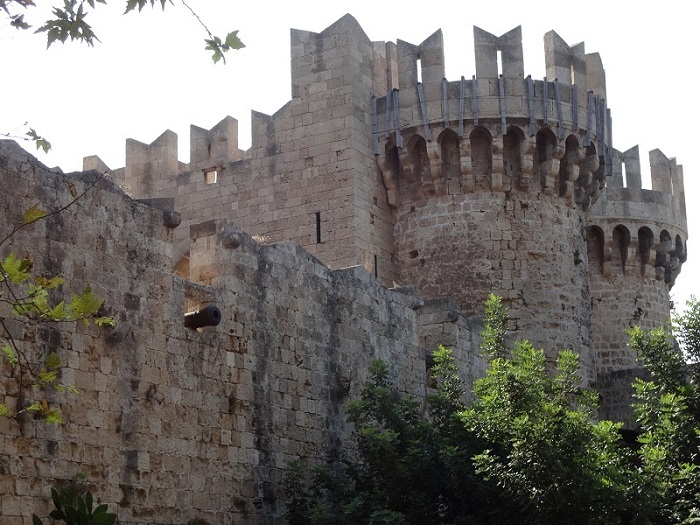
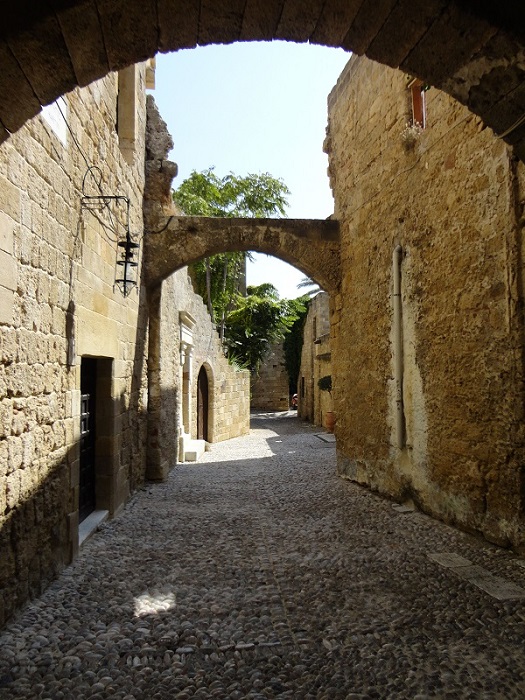
The cobbled lanes open up to glimpses of courtyards with the distinctive choklakia black-and-white pebble mosaics:
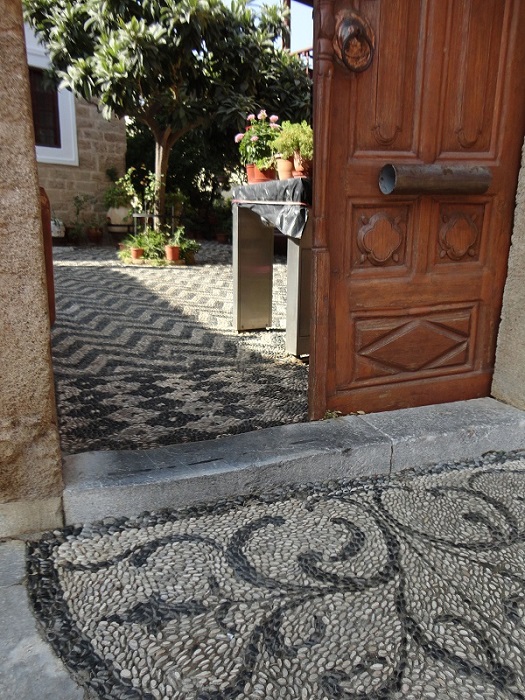
The Palace of the Grand Master of the Knights of St. John, restored:
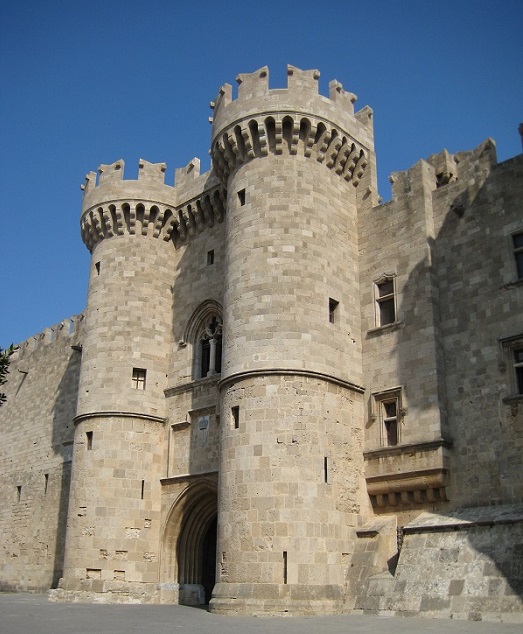
And a glimpse inside (from a previous year) of the gaudy Italian reconstruction Durrell bemoaned. In this case, I agree with him!
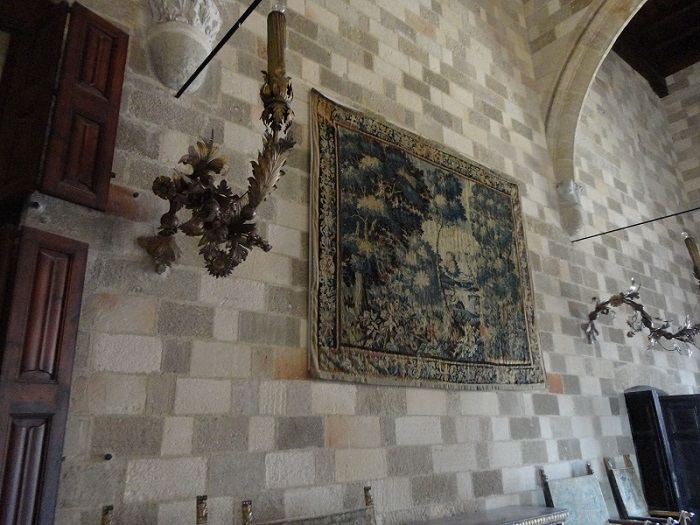
Near the ferry office where we picked up our preordered tickets, just outside the Medieval walls, stands the Mosque of Murad Reis, with an adjoining cemetery for the formerly-occupying Ottoman Turks.
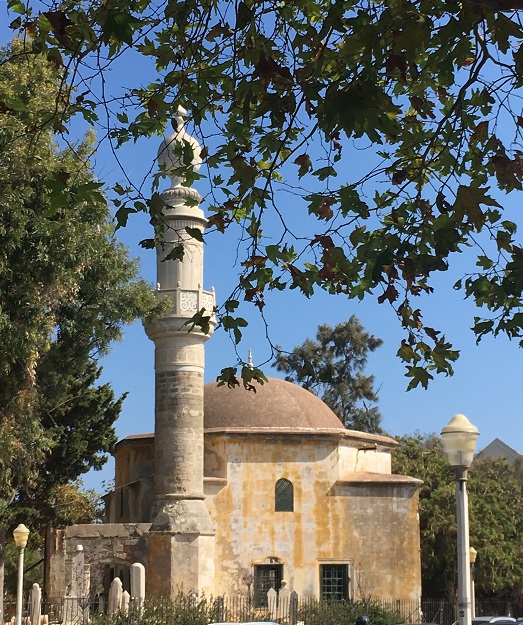
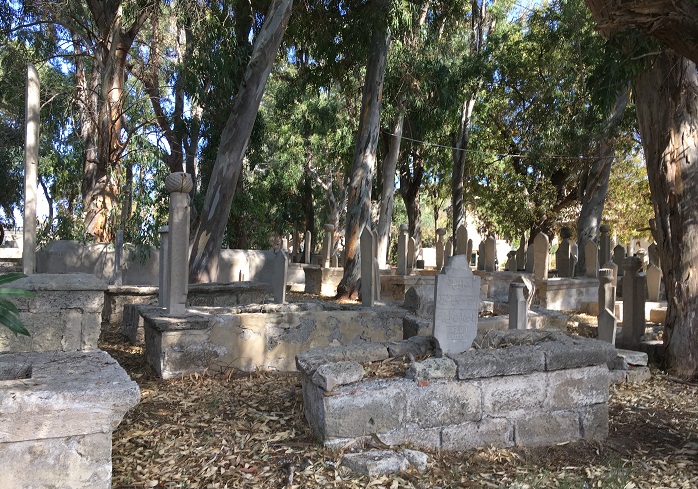
Next to the cemetery, sharing the grove of eucalyptus trees, is the Villa Kleoboulos, where Lawrence Durrell lived.
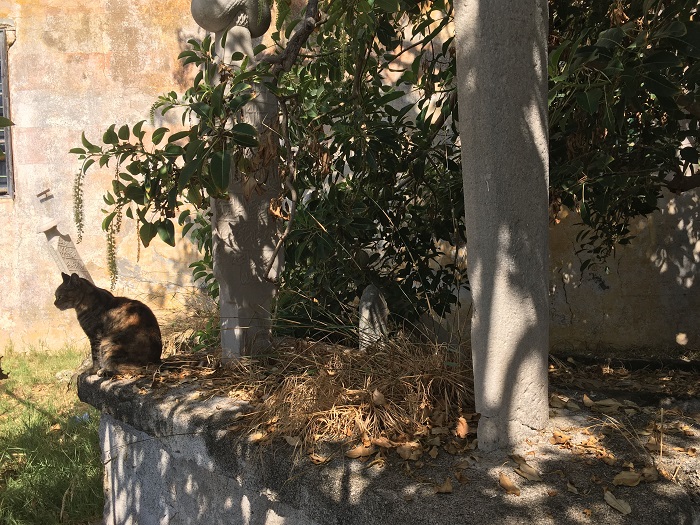

Finally it was time to tear myself away and head for the harbor and ferry docks.
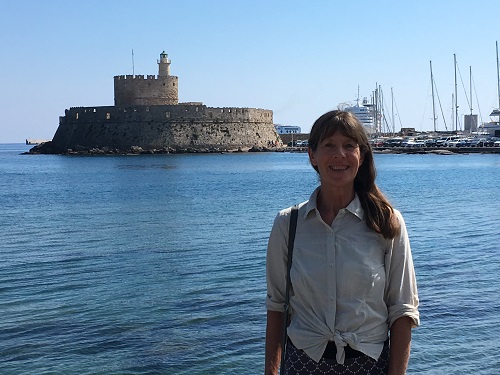
These huge ferries are the best way to travel between islands, with a comfortable lounge/cafe and restaurant upfront, accessible for a very small extra charge on our tickets. I got the front-row lounge seat as we headed out to sea.
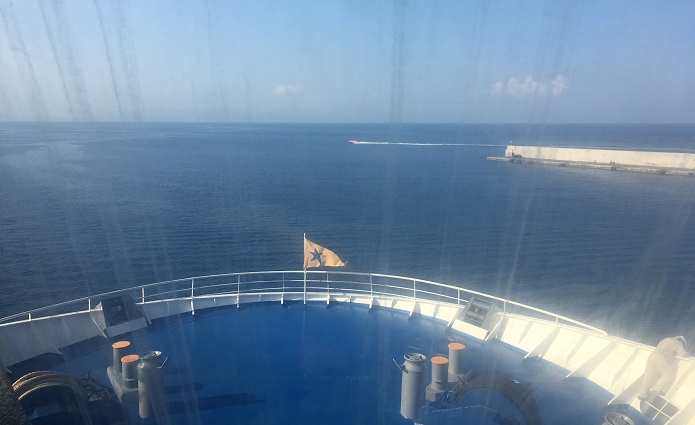
Wandering the outside decks on our way to Kos island, we admired the “wine-dark sea” of Homer and the dragon-clawed coastline of Turkey that Durrell had described from peasant lore.
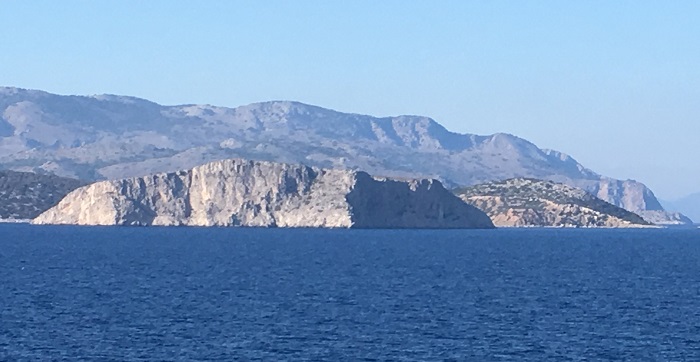
Next week: We arrive on Kos, the healing island of Aesculapios!
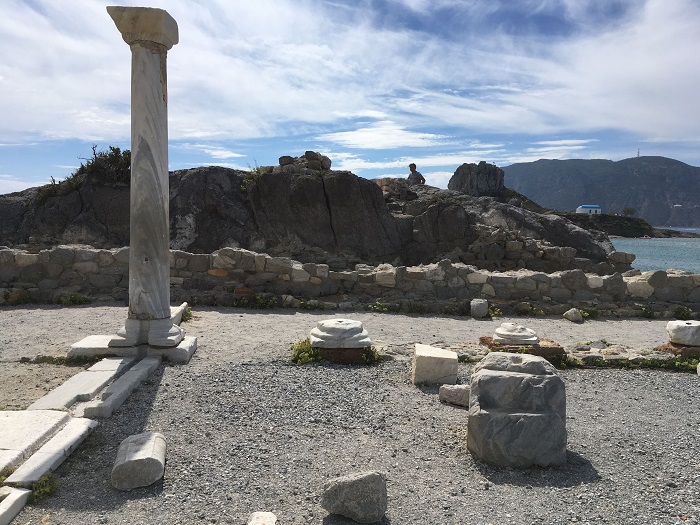
*****
You will find The Rambling Writer’s blog posts here every Saturday. Sara’s latest novel from Book View Cafe is available in print and ebook: The Ariadne Connection. It’s a near-future thriller set in the Greek islands. “Technology triggers a deadly new plague. Can a healer find the cure?” The novel has received the Chanticleer Global Thriller Grand Prize and the Cygnus Award for Speculative Fiction. Sara has recently returned from another research trip in Greece and is back at work on the sequel, The Ariadne Disconnect. Sign up for her quarterly email newsletter at www.sarastamey.com

1 thought on “The Rambling Writer’s Greek Islands 2019, part 3: Farewell to Rhodes”